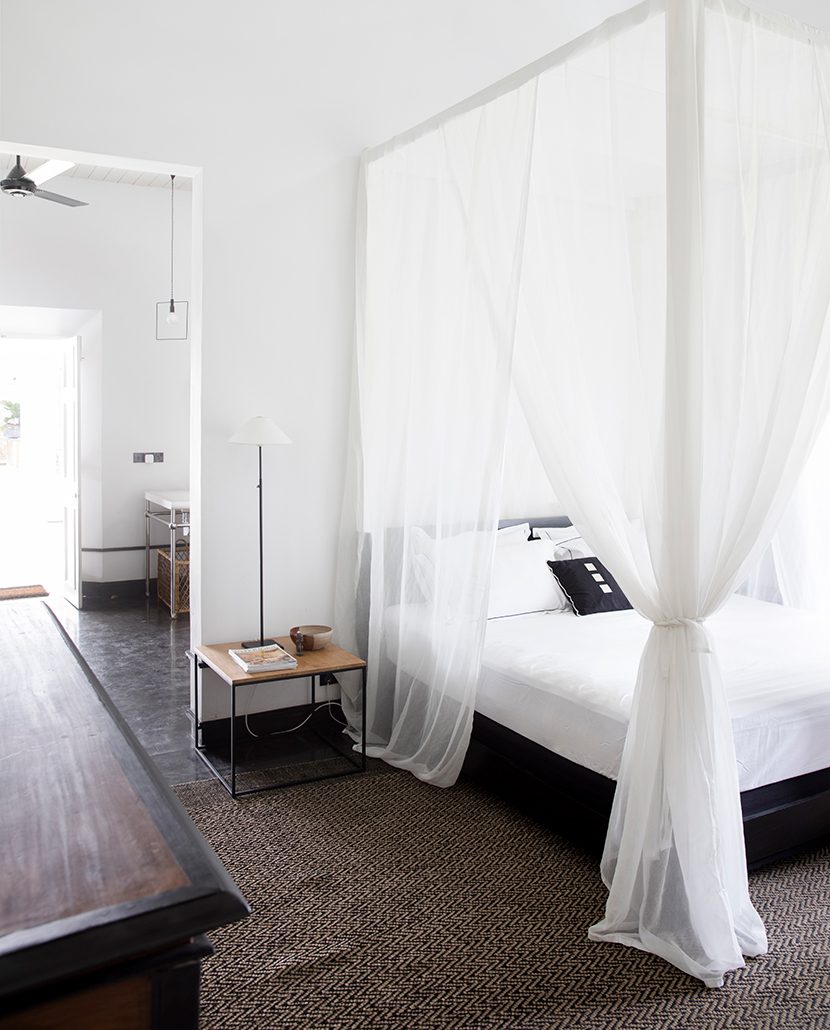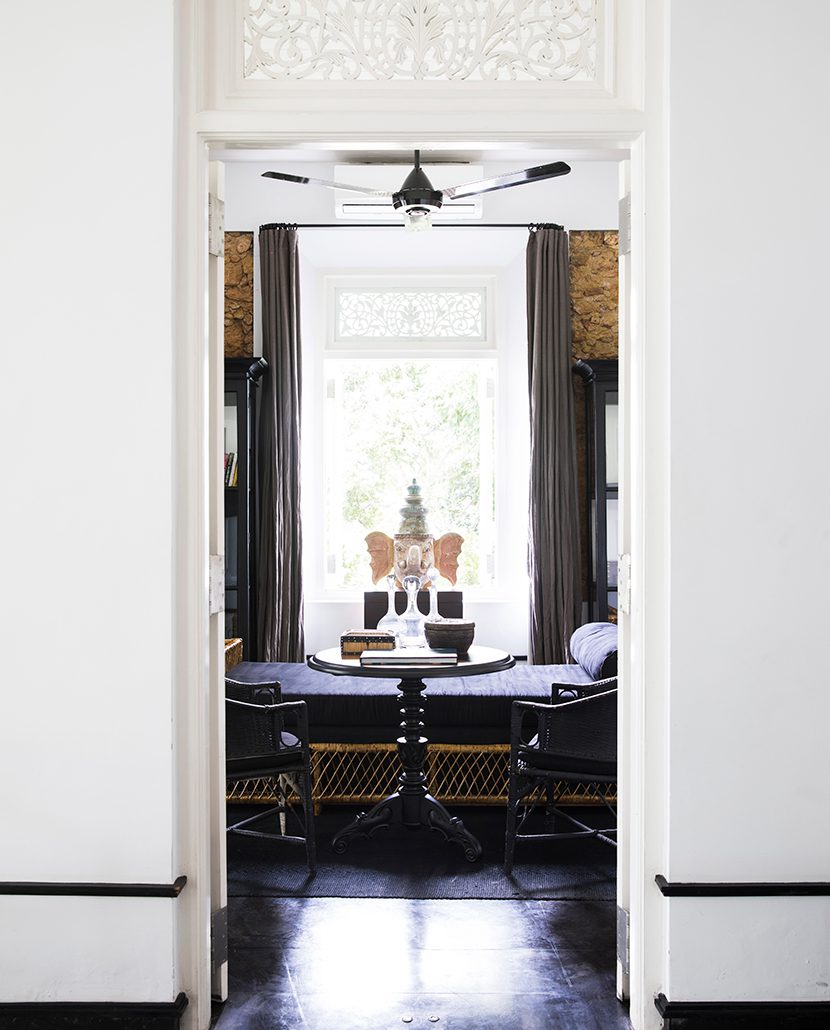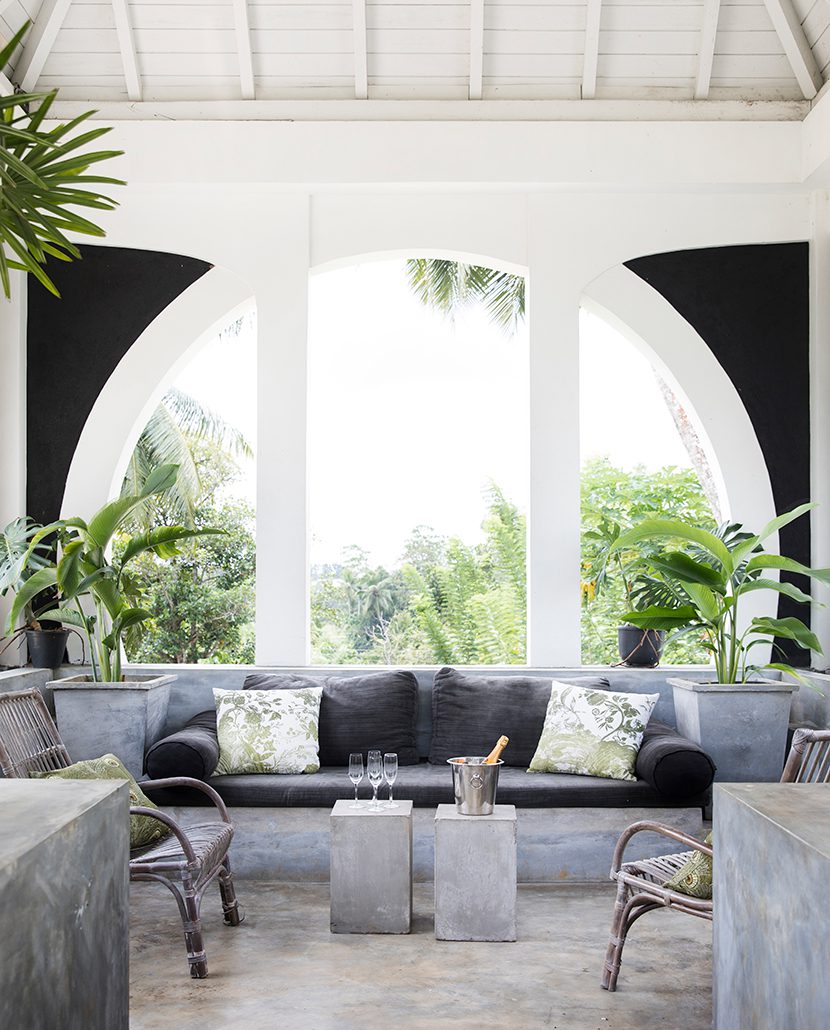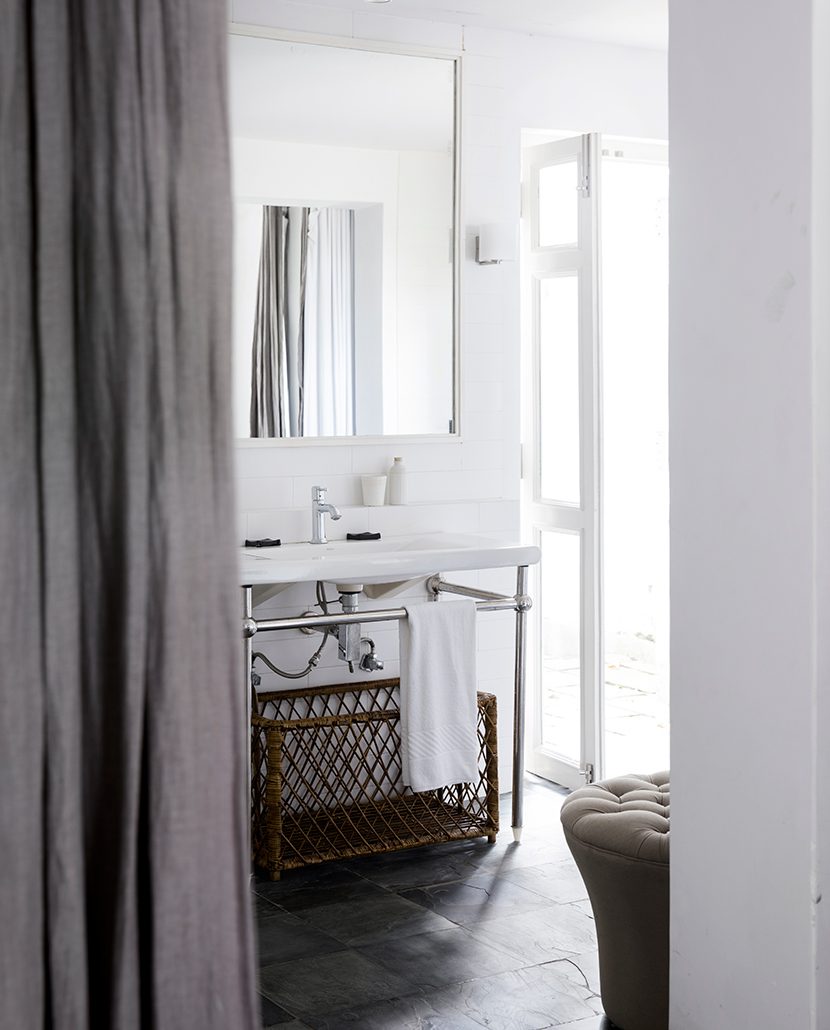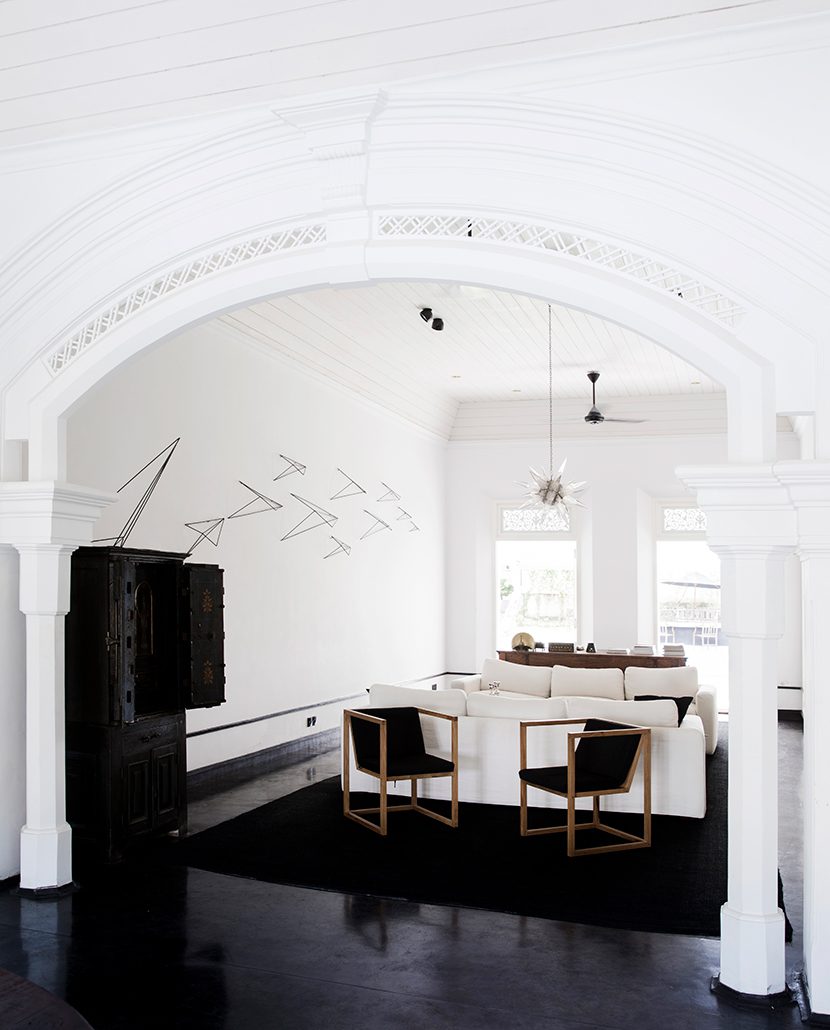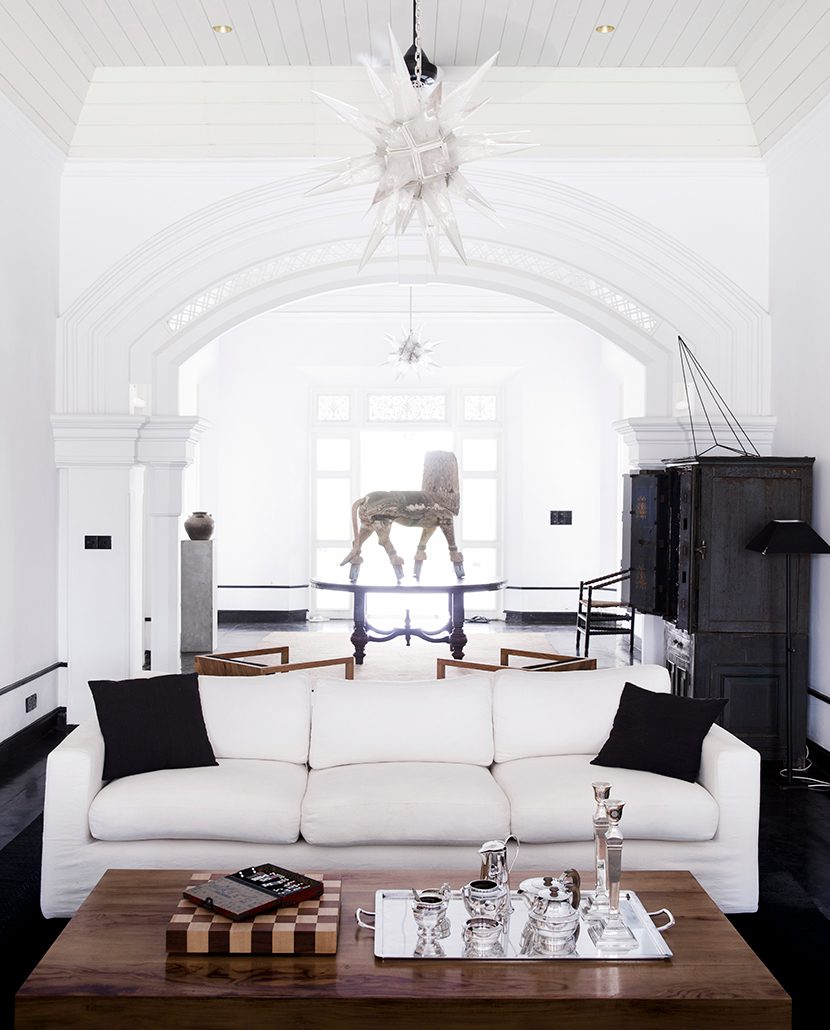Halala Kanda is the culmination of everything that makes Sri Lanka special. Located in Weligama, a pocket of paradise on the southern coast of Sri Lanka, this romantic century-old villa is perched atop a lush plantation hill and surrounded by two acres of groomed gardens and lush foliage. Built in 1912 by a wealthy man to win the heart of his young local bride, Halala Kanda is all sweeping verandas and cavernous pavilions that make the perfect place to enjoy a cool sundowner after a day’s work.
It was rediscovered by four friends several years ago, who instantly fell in love with the grounds. Restoring the plantation became a labour of love they readily undertook, and they set to work tirelessly with local craftsmen to restore the plantation to its opulent splendour – this time, with several eclectic design touches thrown in the mix.
Bedrooms are almost too-large – each of the six cavernous rooms boast soaring ceilings and French doors that open to either the main lawn, terraced lounge areas, or a private garden. The villa’s private salt-water pool is also just steps away from the main house, which offers up a view that stretches beyond the neighbouring jungle and the paddy fields on the coast.
On the fully-staffed grounds of Halala Kanda, you can find gardens replete with tea bushes and a variety of different trees that ranging from coconut to cinnamon growing – all of which can be incorporated into meals by the villa’s private chef at your behest. If you feel peckish at any time of the day, simply drop your chef a note – he can even teach you to make his signature Sri Lankan curry in the spacious, open-concept kitchen.
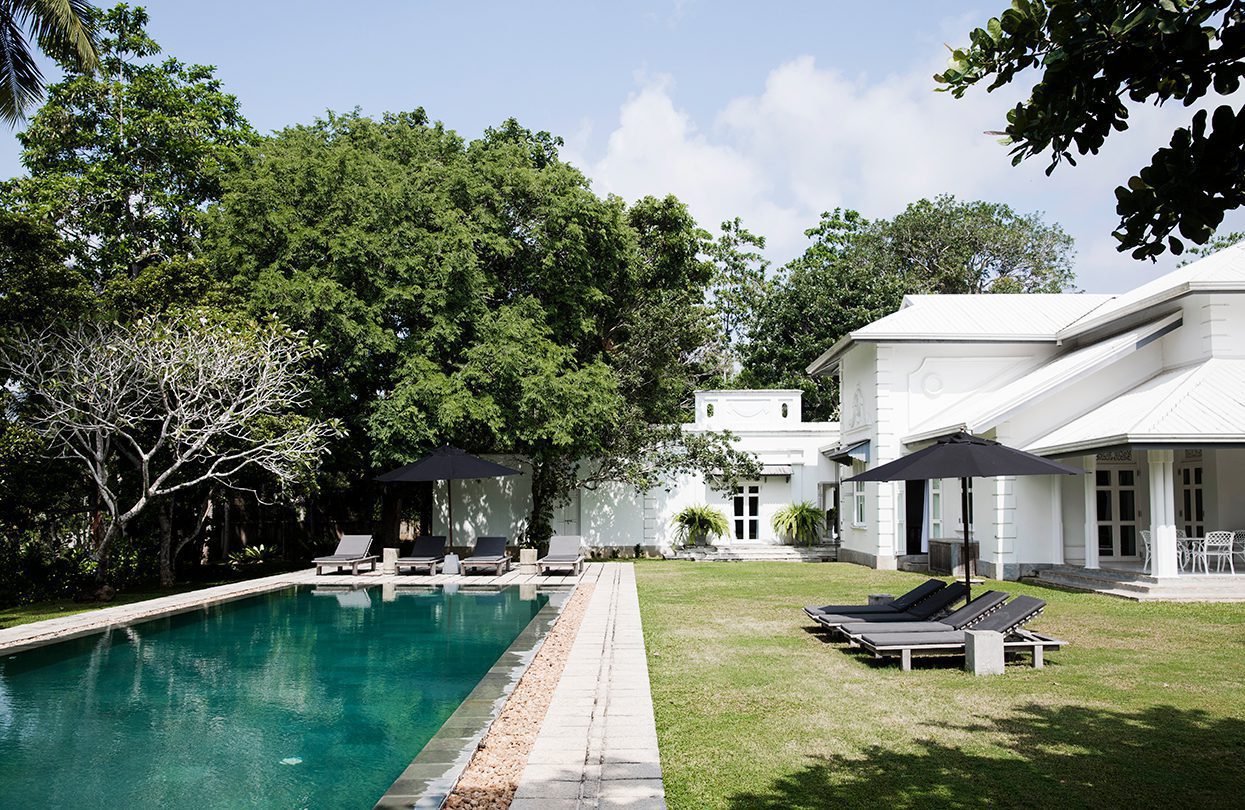
Halala Kanda’s private salt-water pool
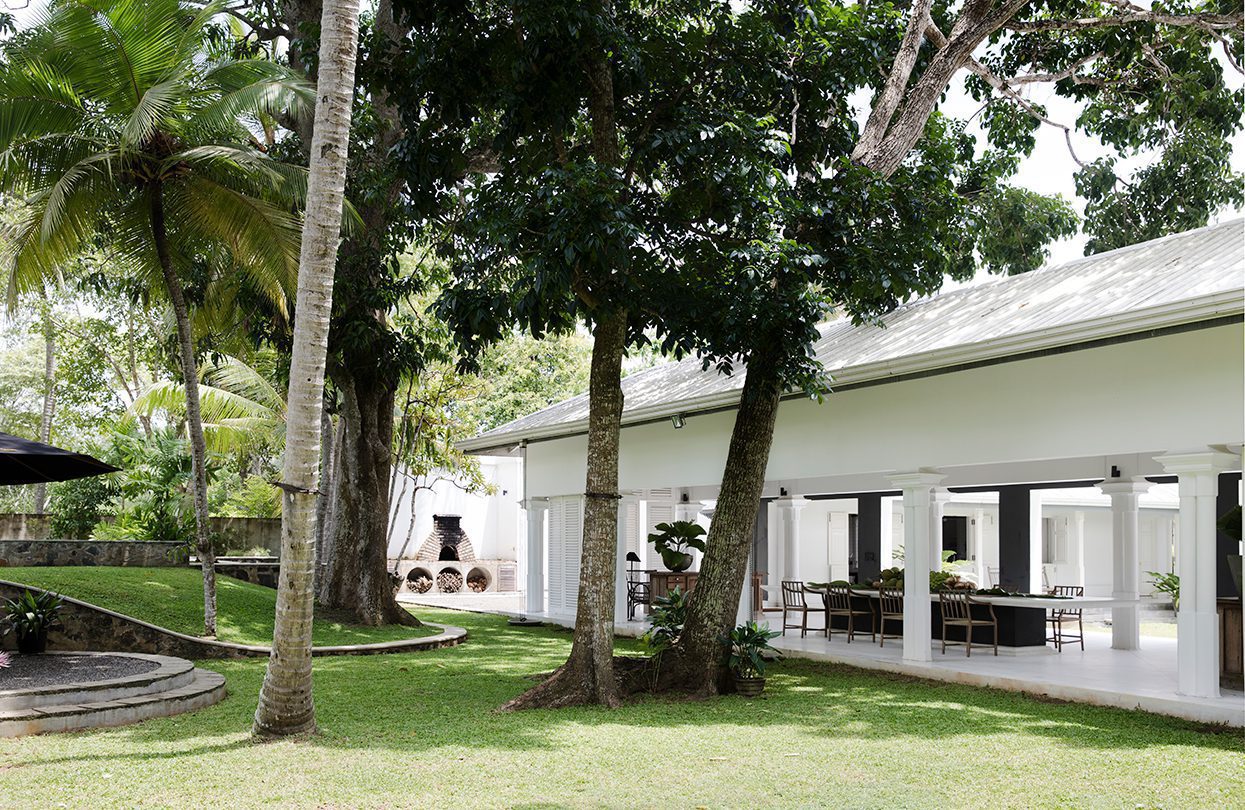
Halala Kanda’s open plan living surrounded by greenery
Transport to the nearby town ofWeligama and the beach via tuk-tukis fun in its own unique way. The town, whose name aptly means ‘Sandy Village’, is a blend of a lively fishing town packed with colour and candour mixed in with the serenity of a beachfront resort. You can find stretches of beaches offering a wealth of water activities and a well-kept turtle conservatory, where you can learn more about the preservation efforts surrounding the abundant local wildlife. ◼
Subscribe to the latest edition now by clicking here.
© This article was first published online in Feb 2019 – World Travel Magazine.




